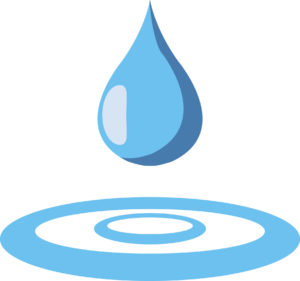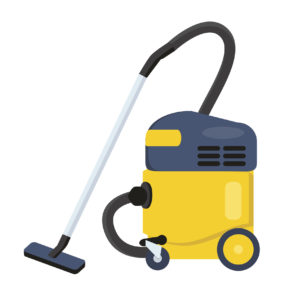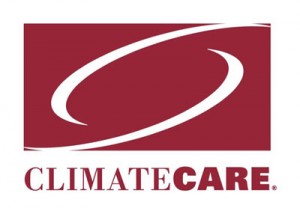![]()
The thought of having your furnace leak water while the air conditioner is running is terrifying.
While this sounds like a serious problem with your furnace, most of the time it’s an indication of a clogged drain.

Though usually not an expensive repair item, it still needs to be attended to.
Ongoing moisture and standing water around your heating and cooling equipment can lead to things like:
- Mold
- Mildew
- Breathing difficulties
- Shortening the lifespan of your HVAC system
 Air conditioning units and condensation
Air conditioning units and condensation
Air conditioning units normally produce condensation as part of their operating process.
Most of the time, depending where your ClimateCare unit is located, a small drain pipe takes the water to a floor drain.
If the drain or a drain pipe becomes clogged then you will see water showing up where it shouldn’t be.
It’s surprising how often that happens to be under the furnace!
It could be the evaporator coil
Your heating and cooling system can’t function properly without an evaporator coil; a series of piping which sits atop your furnace.
Here’s how it works:
- The furnace blower motor circulates household air through the evaporator coil
- The coil take the air’s heat, cools it down, and sends it back through your home as cool air (done through your air ducts)
- The evaporator coil also dehumidifies the air (turning it into water)
- Water moisture drips into a pan above the furnace and blower motor
The excess water goes down a drain (mentioned earlier in this blog) leading to the floor.
When that drain gets plugged or clogged, water can overflow back to the burners, blower fan motor or evaporator coil.
 Quick steps you can take
Quick steps you can take
If you notice water leaking from your furnace while the air conditioner is running, here are some fast steps you can take:
1. Turn off the system: Look for the turn-off switch. If you can’t find it, you can always shut it down from your fuse box.
2. Clean up the water: Do this ASAP. Standing water can damage whatever it comes into contact with.
3. Inspect the filter: Confirm your filter is still clean.
4. Use a water-safe vacuum: Suck up any gunk or clog-causing items.
5. Turn on the AC: After you’ve vacuumed, run the AC. If no leaks appear, you’re in good shape.
6. Pour water into the condensation pump: ONLY DO THIS IF THERE APPEARS TO BE NO LEAKS. If the pump doesn’t do anything, that’s a sign of mechanical failure. If it does pump water, the line leading from the pump to the drain is clear.
ClimateCare can help
Your local ClimateCare member can make a service call to diagnose and fix the problem.
They’ll send a trained technician with comprehensive knowledge of heating and cooling systems.
While there, ClimateCare will do a full system inspection just to make sure it’s not something more serious than a clogged drain.
Prevent future AC and furnace problems with a WeCare Maintenance or Protection Plus Plan
A WeCare Maintenance or Protection Plus Plan is the best way to keep problems like leaky furnaces and clogged drains from ever starting.
With all of your seasonal maintenance chores taken care of by certified technicians, your HVAC system gets the proper care at the right time:
- Drains are checked
- Filters replaced
- All system components are cleaned
With a WeCare Protection Plus Plan, if there ever is a problem, there is no charge for repairs, even after hours.
 More about the ClimateCare Advantage
More about the ClimateCare Advantage
With highly qualified, expert technicians to provide the best products and service possible for home heating and cooling needs, your ClimateCare member is the place to turn for all maintenance and repair needs.
They are a locally owned business and will work hard to earn your trust.
Even if you don’t have a furnace leaking water when the AC is running, call or email ClimateCare to learn more about a WeCare Maintenance or Protection Plus Plan; it takes the worry out of heating and cooling your home.








